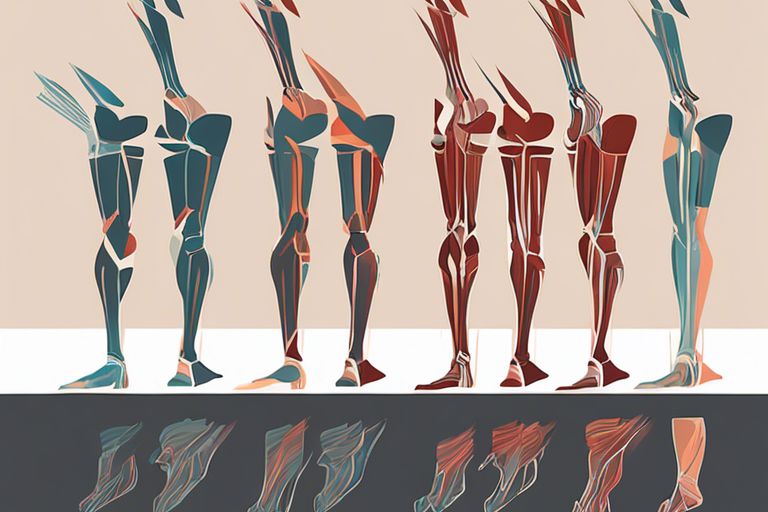Have you ever wondered if walking can help you shed those extra pounds? With obesity rates on the rise and the myriad of health risks associated with carrying around excess weight, it’s important to find an exercise routine that is both effective and sustainable. In this blog post, we’ll explore the benefits of walking for weight loss and why it can be a valuable addition to your fitness regimen. From its low-impact nature to its ability to burn calories and improve overall health, walking has the potential to be a game-changer in your weight loss journey.
Understanding Weight Loss
Before delving into the benefits of walking for weight loss, it is important to understand the basic principles behind weight loss. While it may seem simple that the key to losing weight is to burn more calories than you consume, there are a number of factors that come into play when it comes to shedding those extra pounds.
Calories In vs. Calories Out
At its core, weight loss comes down to the simple equation of calories in vs. calories out. Calories in refer to the food and drinks you consume, while calories out represents the energy your body expends through daily activities and exercise. When you consume more calories than your body needs, the excess is stored as fat, leading to weight gain. Conversely, when you burn more calories than you consume, your body taps into its fat stores for energy, resulting in weight loss.
The Science of Metabolism and Energy Expenditure
Your metabolism plays a crucial role in determining how many calories your body burns at rest. Factors such as age, gender, muscle mass, and genetics all influence your metabolism. Additionally, the level of physical activity you engage in directly impacts your energy expenditure. The more active you are, the more calories you burn. Understanding the science behind metabolism and energy expenditure is essential in your weight loss journey, as it can help you make informed decisions about your diet and exercise habits.
Walking as a Form of Exercise
Obviously, walking is one of the most accessible forms of exercise for most people. It doesn’t require any special equipment, and you can do it just about anywhere. Walking is a low-impact exercise that is easy on your joints, making it suitable for almost anyone, regardless of age or fitness level.
Benefits of Walking for Health and Fitness
Walking has a myriad of health benefits, including improving cardiovascular health, increasing lung capacity, and boosting your immune system. It can also help with weight management, reduce stress, and improve your overall mood. Regular walking can also help prevent and manage various health conditions such as heart disease, high blood pressure, and type 2 diabetes.
How Walking Compares to Other Forms of Exercise
When comparing walking to other forms of exercise, it’s important to consider factors such as intensity, duration, and impact on the body. Walking may not burn as many calories as more intense forms of exercise like running or aerobics, but it is a sustainable and enjoyable form of physical activity for many people. Additionally, walking is low-impact and easy on the joints, making it a safer option for those with joint pain or other physical limitations.
| Walking | Other Forms of Exercise |
| Low-impact | High-impact |
| Accessible to most people | May require specific equipment or facilities |
| Can be done anywhere | May require a specific location or setting |
| Less intense, but sustainable | More intense, but may be harder to maintain |
Ultimately, the best form of exercise is one that you enjoy and can stick with over the long term. Walking is a simple, effective way to improve your health and fitness, and it can be easily incorporated into your daily routine.
Implementing Walking into Your Weight Loss Plan
However, simply adding a few walks into your week won’t necessarily lead to weight loss. If you want to make walking an effective tool for shedding pounds, you’ll need to be strategic about how you incorporate it into your weight loss plan. Here are some tips for making walking work for you as part of your weight loss strategy.
Setting Realistic Goals and Creating a Walking Routine
When it comes to weight loss, it’s important to set realistic goals for yourself. Instead of aiming to walk for an hour every day right from the start, start with a more achievable target, like 30 minutes, three times a week. As you get stronger and more accustomed to walking, you can gradually increase the duration and frequency of your walks. Creating a walking routine can also help ensure that you stay consistent with your exercise, which is key for weight loss. Whether it’s in the morning before work or in the evening after dinner, finding a set time for your walks can help make them a regular part of your day.
Tracking Progress and Staying Motivated
Tracking your progress is crucial for staying motivated and on track with your weight loss journey. By keeping a record of your walks, whether it’s with a fitness app or a simple journal, you can see how far you’ve come and how much you’ve improved over time. This can be incredibly motivating and can encourage you to keep pushing forward. Additionally, finding ways to keep your walks interesting and enjoyable can also help you stay motivated to stick with your exercise routine. Whether it’s exploring new routes, listening to music or podcasts, or walking with a friend, finding ways to make your walks more enjoyable can make it easier to stick with your weight loss plan.
Additional Considerations for Weight Loss Success
Despite the numerous benefits of walking for weight loss, there are additional factors to consider in order to achieve success in your journey.
Diet and Nutrition’s Role in Conjunction with Walking
While walking can certainly aid in weight loss, it is important to remember that your diet and nutrition play a critical role in achieving your goals. Exercise alone may not be enough to see significant weight loss results. You must also pay attention to the types and quantities of foods you consume. Focusing on a balanced, nutritious diet while incorporating walking into your routine can maximize your weight loss efforts.
Addressing Common Obstacles and Plateaus
It is common to face obstacles and plateaus during your weight loss journey, and walking is no exception. These can include lack of motivation, injury, or reaching a point where your weight loss stalls. When this happens, it is important to reassess and adjust your walking routine, seek support from others, and consider incorporating other forms of exercise to break through the plateau. Modifying your walking routine and seeking support can help you overcome these challenges and continue progressing towards your weight loss goals.
Is Walking Beneficial for Weight Loss?
Conclusively, walking is a beneficial form of exercise for weight loss. By incorporating walking into your daily routine, you can increase your physical activity and burn calories, ultimately leading to weight loss. Additionally, walking offers various mental and emotional benefits, making it a sustainable and enjoyable form of exercise. Remember to maintain a consistent walking routine and pair it with a balanced diet to achieve optimal weight loss results.




